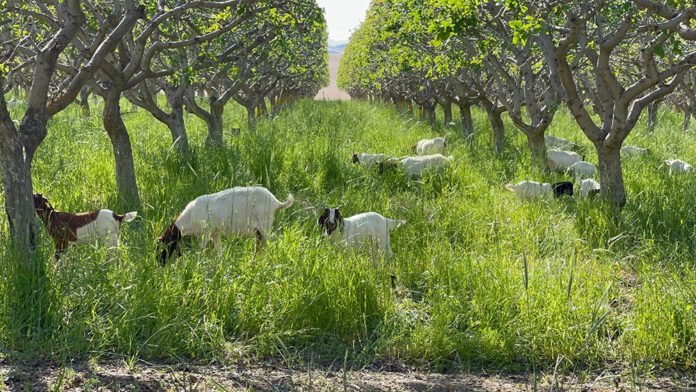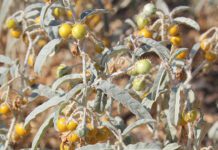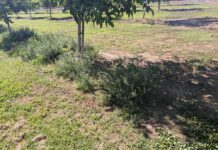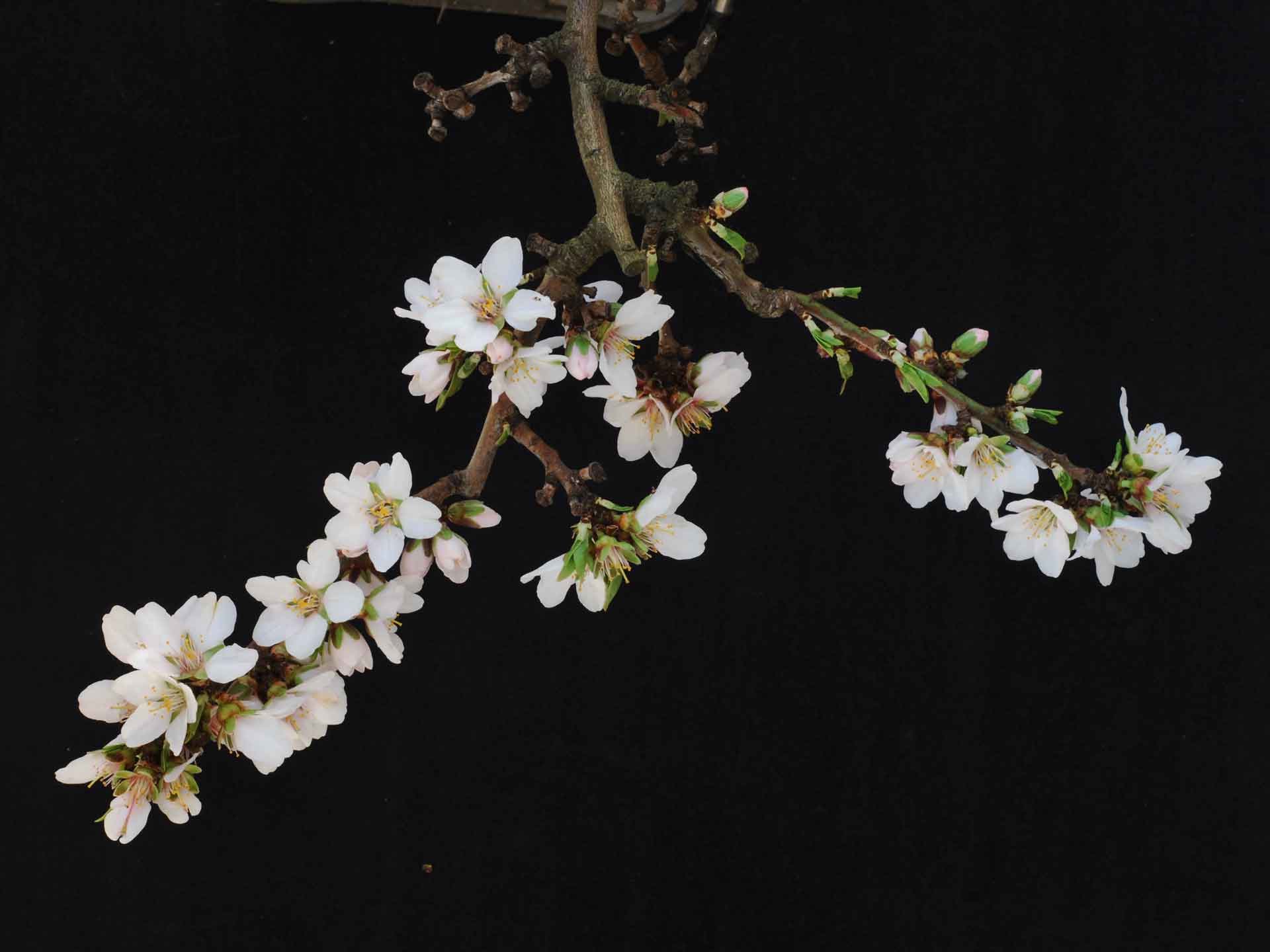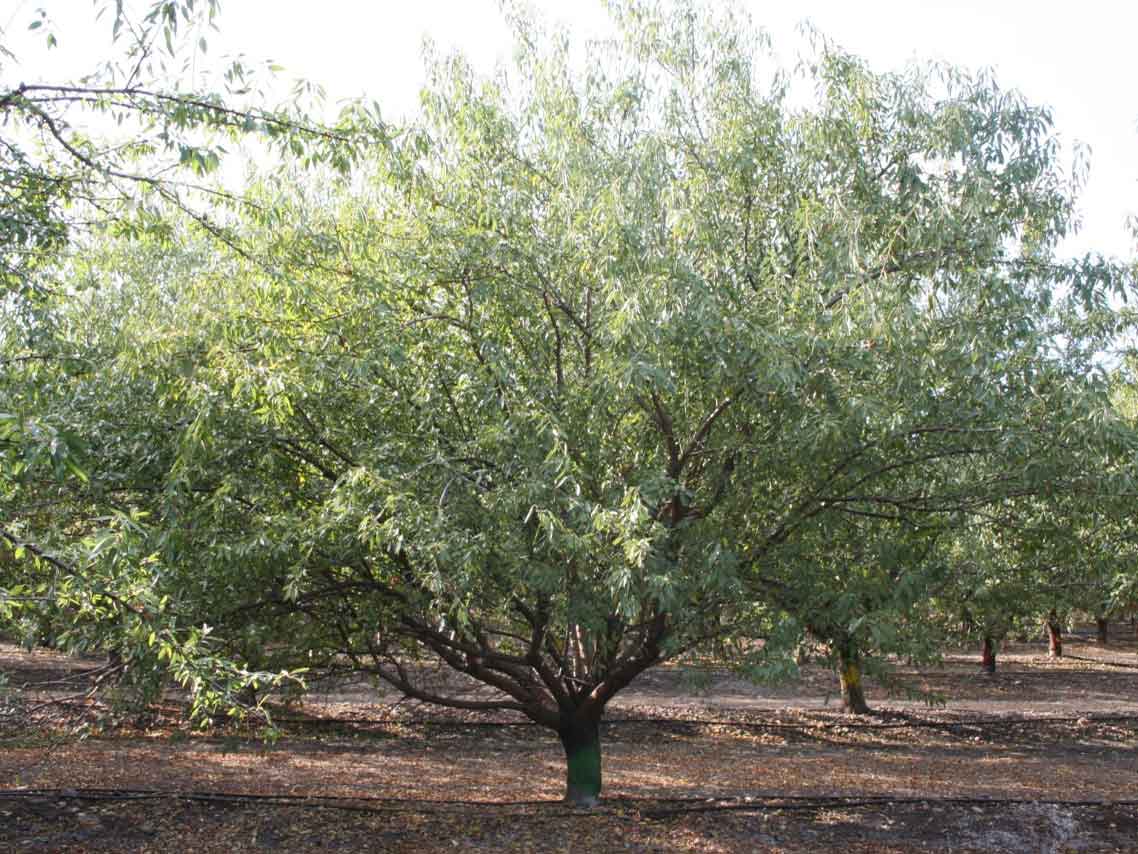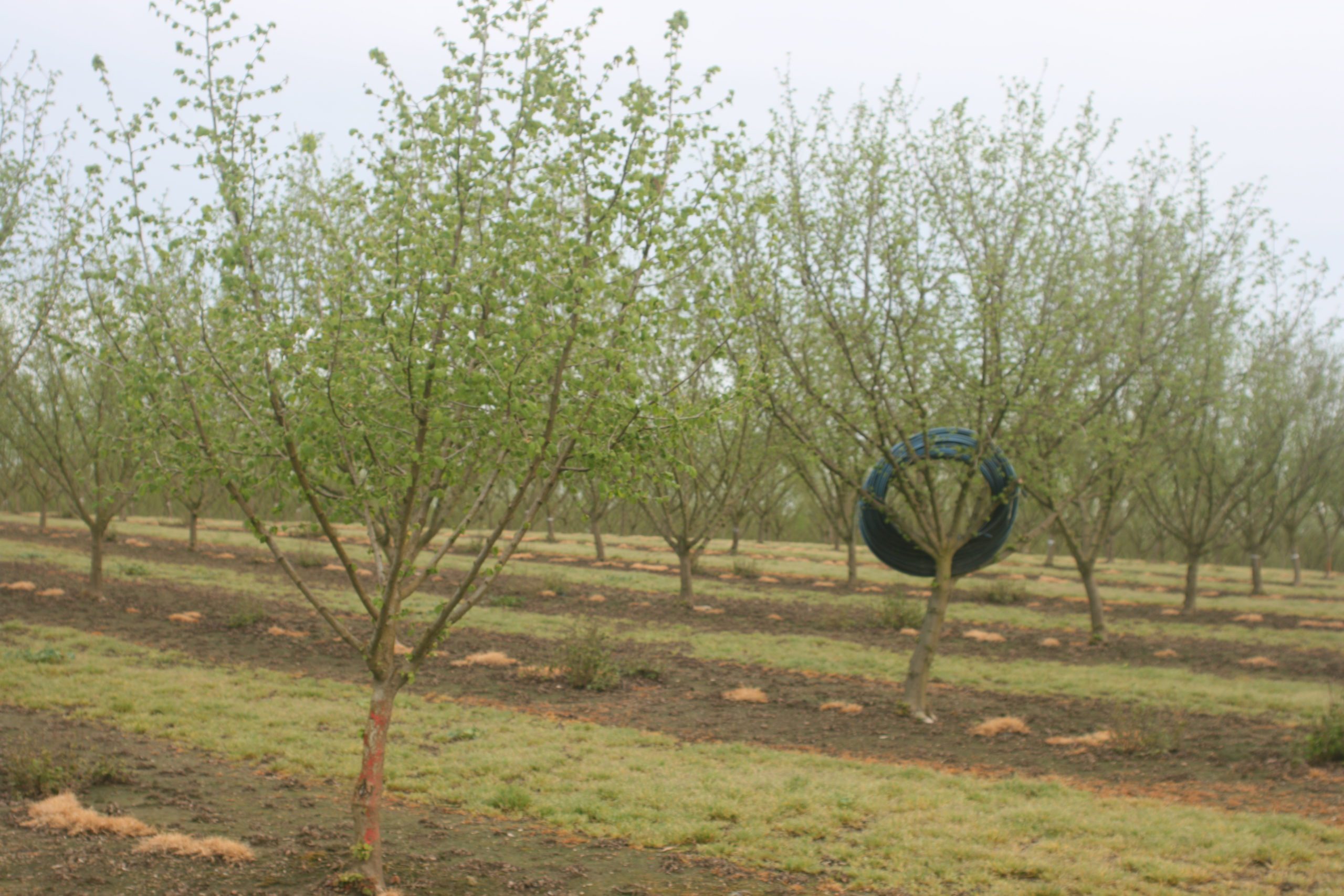Planning and persistence are important factors in reducing problem weed populations in an orchard.
Developing a strategy to keep problem weeds below your tolerance level involves monitoring weeds in the fall to identify summer species that escaped and in late spring to identify winter weed species that were not controlled. Scouting for new weed species is also part of the strategy. Best practices for herbicide applications ensure efficiency.
Persisting with a control program pays off by reducing the weed seed bank in the soil over time and lowering the amount of plant litter on the orchard floor that can interfere with future herbicide applications.
Reading the herbicide label and following directions for rates and timing will help in achieving economical use and optimum results. Important information includes allowed use rate, needed adjuvants, weather conditions or soil requirements, appropriate time to apply and best application equipment.
Scouting and Weed ID
Scouting is the basis for a good integrated weed management plan. The Almond Board of California notes scouting orchards and weed identification will guide herbicide recommendations, as well as mechanical and cultural control methods. Weed species that look similar in early stages of growth may have very different management requirements. Besides species, scouting notes should include phenology, composition and density. Signs of herbicide resistance can also be noted while scouting.
Location of the weeds in the orchard is an important consideration. If they are large and near young trees, they can impact growth. Weeds in the middles of mature orchards have minimal impact on production. Weeds that physically interfere with irrigation will need intervention.
Ryan Hill, UCCE weed science advisor in Tehama County, said scouting an orchard is an essential step in deciding how to adjust weed management practices. Sometimes it is difficult to track which species are present and where they are spatially field to field, as weed populations can be distributed in a patchy manner. Handwritten maps of weed populations can help identify problem areas for future spot applications.
There is a Weed Identification Tool at the UC Weed Research and Information Center website that provides assistance.
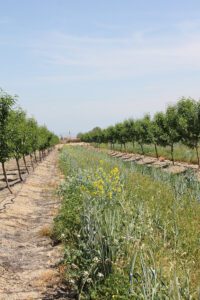
Herbicide Selection and Timing
The first weed control recommendation is to hit them while they are young, or at least before they reach a reproductive state.
Typical herbicide application timing includes postharvest burndown with glufosinate, glyphosate or paraquat. Winter preemergent and postemergent tank mixes are aimed at tree rows. Spring burndown is also aimed at strips, but may include middles. Preharvest burndown is generally across the full orchard floor to achieve a clean harvest.
Hill said weeds are typically more susceptible to control when they are small. Targeting weeds at an earlier growth stage allows use of contact herbicides like paraquat or carfentrazone, which are less effective on larger and more established plants. Larger plants may require a systemic herbicide like 2,4-D or glyphosate for adequate control. The earliest you can target a weed is at seedling emergence, using a residual (preemergent) herbicide. Preemergent herbicides tend to be more expensive but reduce the number of trips through the orchard and effectively manage many glyphosate-resistant weeds. Many preemergent herbicides do not control emerged weeds. Tank mix appropriately to control weeds at all stages present in the field.
The UC publication Sacramento Valley Orchards reports that tank mixes or sequential herbicide applications can broaden the range of weeds controlled and reduce selection for resistant populations. They can include preemergent and postemergent herbicides to control weeds that are present and provide residual activity. Combinations can also work on both grasses and broadleaf weeds and contain materials with different modes of action.
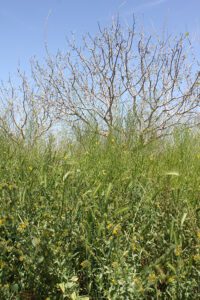
Preventing Resistance
Hill said herbicide resistance comes in many forms. The easiest type to recognize is when a treatment should have killed the targeted species but no effect is observed. This type of resistance is like a light switch; a weed is either fully susceptible or fully resistant. Other times, there is a moderate result, maybe 50% control, but the plants survive. Moderately resistant plants may still set seed and carry on to the next generation, continuing and spreading the resistance problem. Lastly, there can be forms of resistance where treated plants appear dead or adequately controlled, but are not. One example is glyphosate resistance, where herbicide translocation does not occur as expected. Glyphosate should move through all the tissues of a plant, killing roots and meristems, but some resistant plants interfere with this process. In such cases, tissues directly contacted by herbicide solution are killed, but growth resumes from still-living portions.
A good example of this is glyphosate resistance in johnsongrass reported in Argentina, Spain and Arkansas. Hill recommends keeping track of which species have been reported as resistant in your region. It is a good place to start when thinking about what you should be looking for.
If you are seeing unacceptable control from your herbicide program, Hill said you may need to adjust your application timings, recalibrate your equipment or change your herbicide mix.
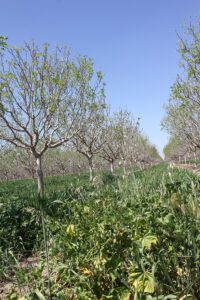
Efficient Herbicide Application
The best control plan in the world will not be effective if the delivery is lacking. Accurate, uniform and efficient applications are the goal. Minimizing drift is also part of the plan. Jorge Angeles, UCCE advisor in Tulare County, notes spray droplet size determines drift potential. Droplets smaller than 200 microns are more likely to drift. On the other hand, large droplets reduce drift but also decrease coverage. Angeles recommends using spray nozzles and pressures that produce medium-size droplets.
Sprayer output should be measured to detect differences that may indicate worn or plugged nozzles. Calculating sprayer speed and output is also part of achieving good coverage.
Follow-Up
Follow up during the year with field scouting and cleanup operations. Any effective weed management program should be built on data, whether that data is actual weed counts and ratings or a manager’s mental assessment after walking or driving through the orchard multiple times during the season. Integrated weed management is not a one-and-done decision; it should be fine-tuned based on what is working, what changes are necessary and what new problems are sprouting. Additionally, follow-up scouting provides an opportunity to identify and manage problems such as new species or suspected herbicide resistance while the problem is small and localized. Timely spot treatments or hand labor at the beginning of a problem can save a great deal of effort and expense later.

Cecilia Parsons
Cecilia Parsons has lived in the Central Valley community of Ducor since 1976, covering agriculture for numerous agricultural publications over the years. She has found and nurtured many wonderful and helpful contacts in the ag community, including the UCCE advisors, allowing for news coverage that focuses on the basics of food production.
She is always on the search for new ag topics that can help growers and processors in the San Joaquin Valley improve their bottom line.
In her free time, Cecilia rides her horse, Holly in ranch versatility shows and raises registered Shetland sheep which she exhibits at county and state fairs during the summer.







